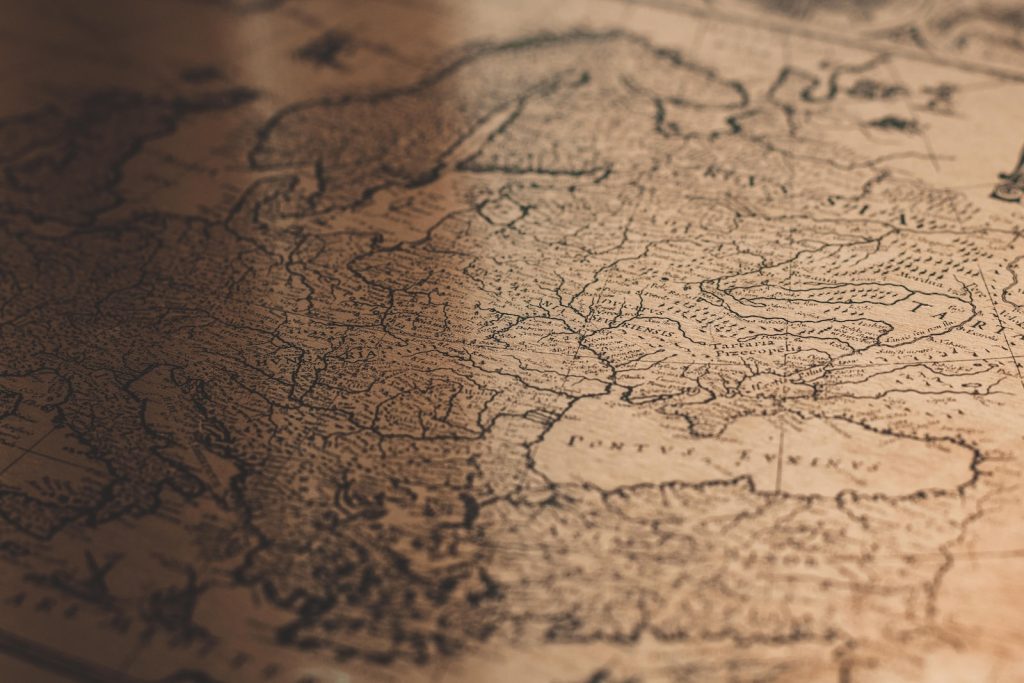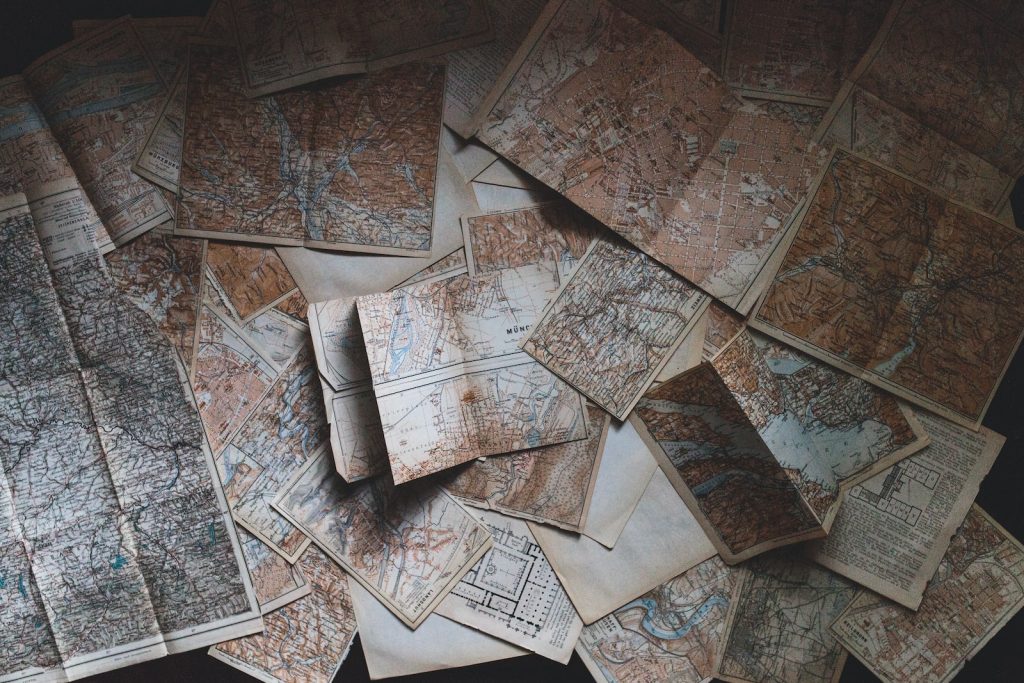Maps have been an integral part of human history since ancient times. They have helped explorers chart unknown territories, aided in navigation, and provided insight into the world’s geography. But beyond their practical applications, maps also hold a unique charm and aesthetic appeal. This is where cartophily, the hobby of collecting maps, comes in.
Collecting maps can be a fascinating and rewarding hobby for anyone interested in history, geography, or art. Whether you’re a serious collector or just starting out, there’s always something new to discover and explore in the world of cartophily.
In this guide, we’ll take a closer look at the art and science of collecting maps, including the history of cartography, the different types of maps, and tips for building your collection. So grab your magnifying glass and join us on a journey through the fascinating world of cartophily.
What is Cartophily?
Cartophily is the hobby of collecting and studying maps. It is a relatively niche but fascinating pursuit that attracts a diverse range of enthusiasts, from history buffs and geography enthusiasts to art collectors and antique dealers.
The term “cartophily” comes from the Greek words “chartes” (meaning map or chart) and “philia” (meaning love or fondness). It refers to collectors’ passion and fascination for maps and cartography.
Humans have used maps for thousands of years to navigate, explore, and record the world around them. As such, they have played a crucial role in the development of civilization, and the study of maps has become a subject of academic interest in its own right.
For many cartophiles, collecting maps is not just a hobby but a way of life. They may attend map fairs and conferences, participate in online forums, and even contribute to academic research in the field. By studying and preserving maps, cartophiles help ensure that these important historical documents are not lost to time.
History of Map Making

The history of map-making dates back thousands of years to ancient civilizations such as the Babylonians, Egyptians, and Greeks. These early maps were often simple representations of local geography and were used primarily for navigation and trade.
One of the earliest known maps is the Babylonian Map of the World, which dates back to around 600 BCE. This map depicts the world as a flat disk surrounded by water, with Babylon at its center. It also includes details such as mountain ranges, rivers, and cities.
In ancient Greece, map-making began to evolve into more sophisticated art. The Greek philosopher Anaximander is credited with creating one of the first maps of the known world in the 6th century BCE. This map included the Mediterranean Sea, Europe, Asia, and Africa and was based on observations of the stars and the shape of the Earth.
During the Middle Ages, map-making continued to advance, particularly in the Arab world. Arab cartographers developed new techniques for projecting the spherical Earth onto a flat surface, allowing for more accurate world maps. One of the most famous examples of medieval cartography is the 11th-century Catalan Atlas, which includes maps of Europe, Asia, and Africa and was produced in the Spanish Kingdom of Catalonia.
The Renaissance saw a resurgence of interest in map making, with artists and scientists working together to create more accurate and aesthetically pleasing maps. One of the most famous cartographers of this era was Gerardus Mercator, who developed the Mercator projection, a method for accurately depicting the Earth’s curved surface on a flat map.
Today, map-making continues to evolve with the use of satellite technology and digital mapping tools. However, the basic principles of cartography remain the same, and maps continue to play a vital role in helping us navigate and understand the world around us.
Types of Maps to Collect

There are many different types of maps that collectors may be interested in. Here are some of the most common types of maps to collect:
- Antique maps – These were created before the 20th century and are highly valued for their historical and aesthetic significance. Antique maps may depict a particular region, country, or the world as a whole and can be found in various styles and formats.
- Topographical maps – Topographical maps depict the physical features of a region, including mountains, rivers, and other natural landmarks. These maps are often used for outdoor recreation, such as hiking and camping, and can be highly detailed and informative.
- Nautical charts – Nautical charts are maps used for navigation on the water, depicting the coastline, water depth, and hazards to navigation. They are often highly detailed and include information such as tide tables and currents.
- Geological maps – Geological maps show the geologic features of a region, including rock formations, fault lines, and mineral deposits. These maps are used in scientific research, mining, and oil and gas exploration.
- City plans – City plans depict the layout and architecture of a particular city, often including streets, buildings, and landmarks. They can be highly detailed and provide insight into the history and development of a city over time.
- Thematic maps – Thematic maps depict specific themes or subjects, such as population density, climate, or transportation routes. These maps can be highly informative and are often used in academic research and planning.
- Pictorial maps – Pictorial maps are artistic representations of a particular region or theme, often featuring whimsical illustrations and humorous captions. These maps are highly collectible for their unique artistic style and historical significance.
Collectors may also be interested in related materials like atlases, globes, and antique map-making tools. With so many different types of maps to collect, cartophiles can find endless opportunities to explore and discover the world through the art of cartography.
Finding Maps to Buy

For cartophiles, finding maps to buy can be a thrilling experience. Many different sources for purchasing maps include online marketplaces, antique dealers, and specialty map stores. Here are some tips for finding maps to buy:
- Online marketplaces – Online marketplaces such as eBay and Etsy can be great sources for finding vintage and antique maps. These websites often have a wide selection of maps available from sellers worldwide, allowing you to search by location, era, and other criteria.
- Antique dealers – Antique dealers may specialize in selling maps and other historical documents. Visiting antique shops or attending antique fairs can be a great way to find unique and valuable maps. Antique dealers may also be able to provide information on the history and significance of the maps they sell.
- Specialty map stores – Specialty map stores may offer a wide selection of maps, including modern and historical maps, topographical maps, nautical charts, and more. These stores may also offer custom framing and restoration services.
- Auctions – Auctions can be a great way to find rare and unique maps. Many auction houses hold regular sales of antique and rare maps, which may be attended by collectors worldwide. Online auctions such as Sotheby’s and Christie’s also offer the opportunity to bid on valuable maps from your home.
- Estate sales and garage sales – Estate sales and garage sales can be a great way to find maps at a bargain price. Many people may not realize the value of their maps, and they may be willing to sell them for a fraction of their true worth.
When purchasing maps, it’s essential to consider the map’s condition, rarity, and provenance. Maps in good condition and with a clear provenance can be highly valuable and may appreciate in value over time. With a bit of research and some patience, cartophiles can build a collection of maps that is both beautiful and informative.
Care and Preservation of Maps
Maps are delicate artifacts that require special care to preserve their condition and historical value. Here are some tips for caring for and preserving your map collection:
- Handle with care – Always handle maps with clean and dry hands to prevent oils and moisture from damaging the paper. Avoid folding or creasing maps, and use archival materials to support the map when handling it.
- Store in a dry and stable environment – Maps should be stored in a cool, dry, and stable environment to prevent damage from humidity, temperature fluctuations, and exposure to light. Avoid storing maps in basements or attics, as these areas may be prone to moisture and temperature extremes.
- Use archival materials – Store maps in acid-free folders or sleeves made from archival-quality materials. Use boxes made from acid-free materials to prevent damage from dust and light. Avoid using adhesive tape or glue on maps, as this can damage the paper over time.
- Keep away from sunlight – Sunlight can cause fading and yellowing of maps. Avoid displaying maps in direct sunlight, and use UV-protective glass or acrylic when framing maps for display.
- Keep away from pests – Insects and rodents can damage maps. Store maps in airtight containers to prevent infestation, and use pest control measures if necessary.
- Avoid cleaning – Cleaning maps can be risky and may cause damage to the paper. Instead, use a soft-bristled brush or an eraser to remove dust and dirt gently. Consult a professional conservator for advice if the map is dirty or damaged.
By following these tips, cartophiles can ensure that their maps remain in good condition for future generations. Proper care and preservation can protect the maps’ value and allow future generations to appreciate their historical and artistic significance.
Conclusion: Enjoying Cartophily
Cartophily is a fascinating hobby that offers both historical and artistic value. Collecting and studying maps can be an enriching experience, allowing us to learn about the world’s geography, history, and culture. Whether you collect vintage, topographical, or nautical charts, there is always something new to discover and appreciate.
However, to truly enjoy cartophily, it’s important to approach it with a sense of curiosity, patience, and respect. Take the time to research the maps you collect, learn about their history and significance, and care for them properly to preserve their condition for future generations.
Cartophily also offers opportunities to connect with other collectors and enthusiasts. Joining a map society or attending map fairs and events can be a great way to meet like-minded people and share your passion for maps.
In conclusion, cartophily is a rewarding and enriching hobby that allows us to explore the world through a unique lens. Whether you’re a seasoned collector or just starting out, there is always something new to discover and appreciate in the world of maps. So, grab a map and start exploring!






























